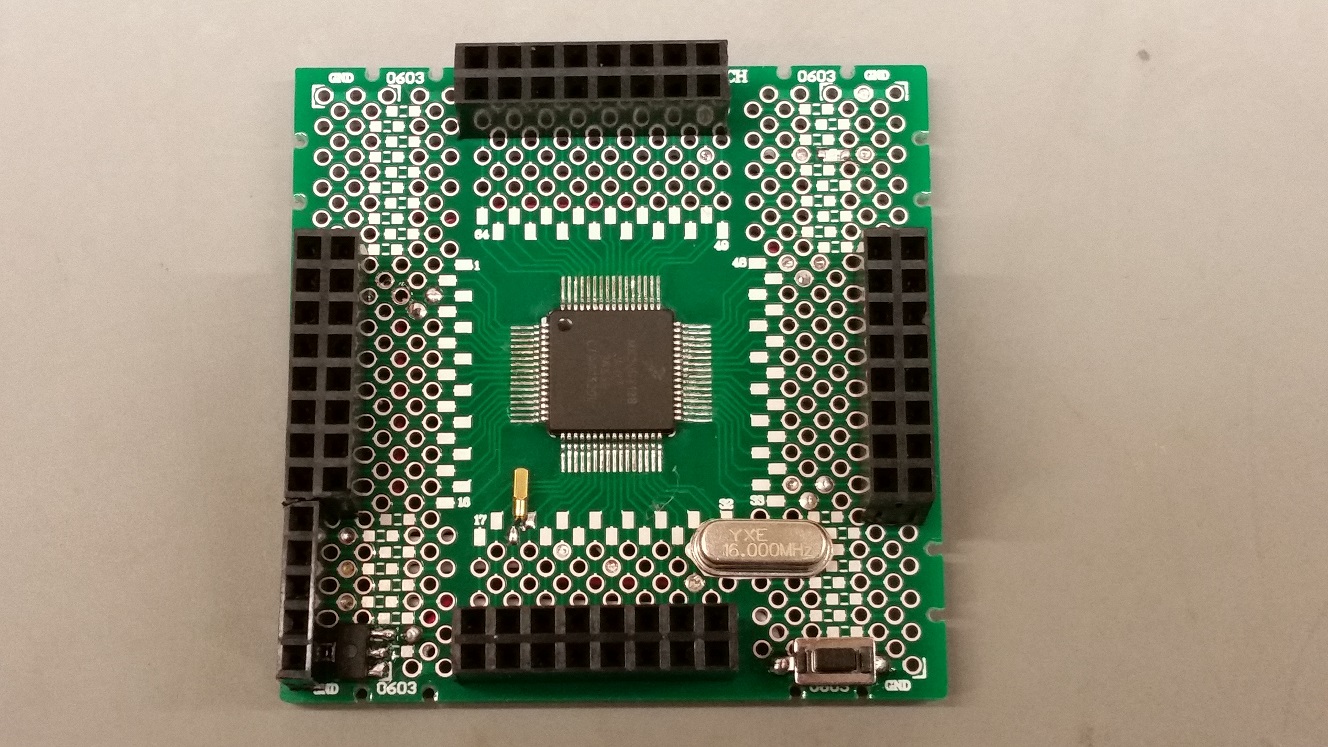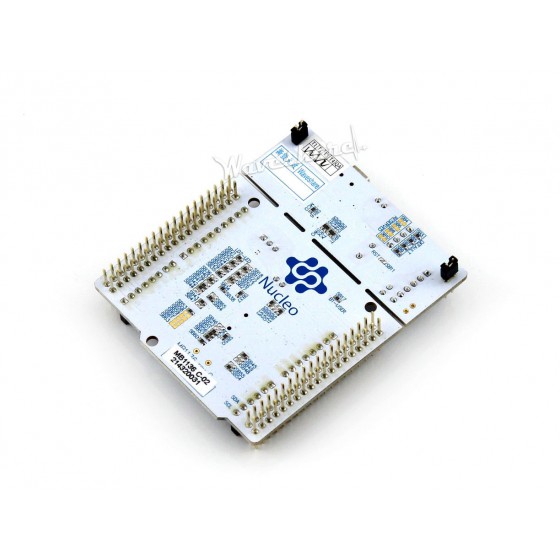
- #NUCLEO BOARD WITHOUT MORPHO HEADER PINS HOW TO#
- #NUCLEO BOARD WITHOUT MORPHO HEADER PINS FULL#
- #NUCLEO BOARD WITHOUT MORPHO HEADER PINS SOFTWARE#
- #NUCLEO BOARD WITHOUT MORPHO HEADER PINS CODE#
#NUCLEO BOARD WITHOUT MORPHO HEADER PINS HOW TO#
These drivers are built around a generic architecture which gives the ability to built-upon these layers, to implement their functions without knowing in-depth how to use the MCU. The HAL drivers layers provide a generic multi instance simple set of application programming interfaces that interact with the upper layer (application, libraries and stacks).
#NUCLEO BOARD WITHOUT MORPHO HEADER PINS CODE#
In CooCox the HALdrivers were used to help code the microcontroller. Along with mbed, CooCox was also used which is a open-source Eclipse based IDE and ARM Cortex-M development tool using the GNU ARM Toolchain. The Nucleo was programmed by using mbed which is a platform and operating system for devices based on 32-bit ARM Cortex-M microcontrollers.
#NUCLEO BOARD WITHOUT MORPHO HEADER PINS FULL#
The Arduino header along with the ST-Morpho header pins allow the user to easily access each pin of the MCU to gain full control for application being developed. The Nucleo boards comes with their own on-board programmer/debugger. This board is used due to the high speed floating point operation and DSP functionality provided by the ARM based processor on the MCU. The Nucleo-STM32F303RE board from ST-Microelectronics was chosen to be used for the Digital Signal Processor. This functionality is important for the guitarist. The multi-effects pedal and guitar should be able to be reprogrammed using a computer or function without any other external accessories when just practicing. The primary aim of this project is to design and construct a multi-effects pedal that can be reprogrammed for the electric guitar. With the advancement in digital signal processors and the improvement in the field of music and electronics, it has become possible to create a multi-effects pedal capable of processing audio in real time. These pedals come in various price ranges, but it does not oer the guitarist the possibility to create his own effects by reprogramming the effects pedal or using a custom effect. An effect pedal is an electronic device that uses the output signal from the guitar pick-up as input and changes the signal by applying signal processing techniques to create an altered output signal.

To achieve this guitarists use effect units which are commonly known as effects pedals. Certain styles of playing requires specifc effects. IEEE-802.Playing an instrument like the electric guitar requires a lot of time to practice and improve your playing skills.USB OTG or full-speed device with Micro-AB connector (depending on STM32 support).External power sources: 3.3 V and 7 - 12 V on ST Zio or ST morpho connectors, 5 V on ST morpho connector.Three different interfaces supported on USB: virtual COM port, mass storage, debug port Selection-mode switch to use the kit as a standalone ST-LINK/V2-1.On-board ST-LINK/V2-1 debugger/programmer with SWD connector:.ST morpho extension pin header footprints for full access to all STM32 I/Os.Uno V3 connectivity (A0 to A5, D0 to D15) and additional signals exposing a wide range of peripherals ST Zio connector including: support for Arduino™.STM32 microcontroller in LQFP144 package.
#NUCLEO BOARD WITHOUT MORPHO HEADER PINS SOFTWARE#
This board integrates the ST-LINK/V2-1 debugger / programmer and comes with the STM32 comprehensive software HAL library, together with various packaged software examples, as well as a direct access to the ARM ®mbed ™online resources at. The STM32 Nucleo-144 board does not require any separate probe. The ST Zio connector, which is an extension of Arduino ™ Uno V3, provides access to more peripherals and ST morpho headers provide an easy mean of expanding the functionality of the Nucleo open development platform with a wide choice of specialized shields.

The STM32 Nucleo-144 board provides an affordable and flexible way for users to try out new concepts and build prototypes with the STM32 microcontroller, choosing from the various combinations of performance, power consumption and features. NUCLEO-F746ZG:STM32 Nucleo-144 development board with STM32F746ZG MCU, supports Arduino, ST Zio and morpho connectivity


 0 kommentar(er)
0 kommentar(er)
